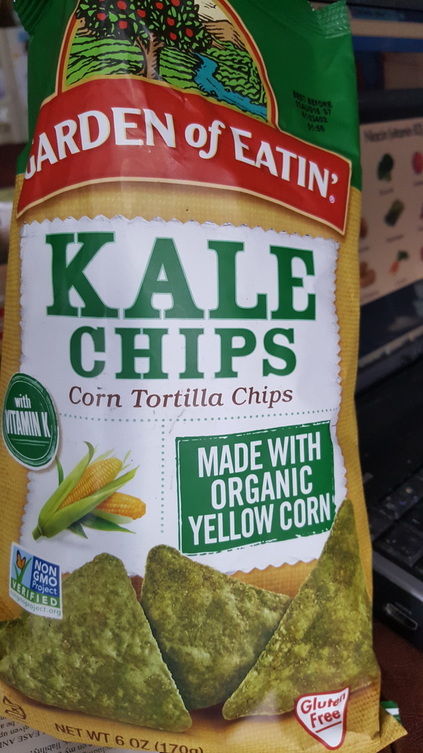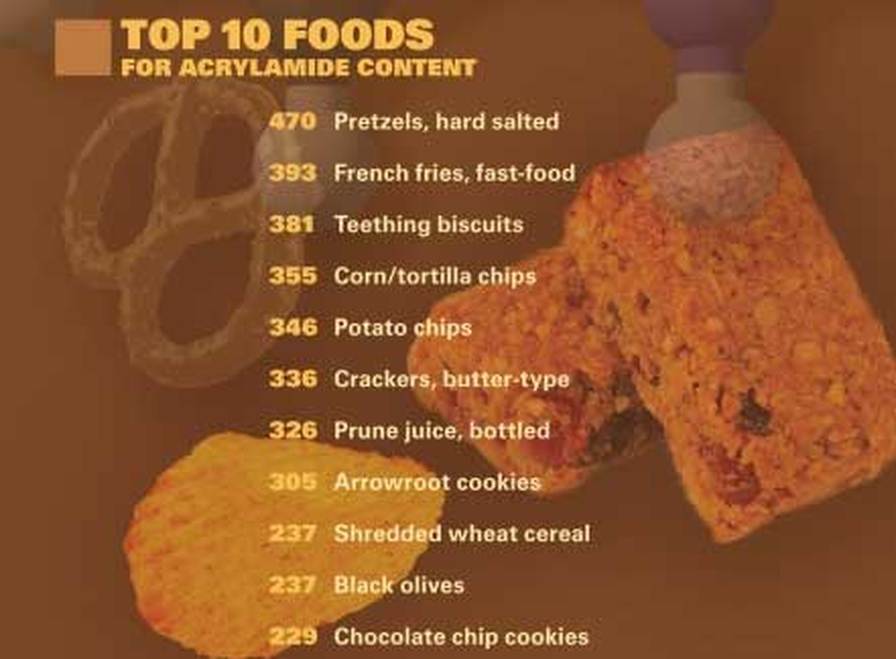
♡ Don't be Fooled by deceptive labeling ♡ These chips are not healthy ♡
♥ Share the Awareness ♥
The only chips that can be considered healthy are cooked or dehydrated at less than 212 degrees ♡ Otherwise, the higher temperatures typically form a highly toxic chemical called acrylamide ♡ yes, even baked chips are unhealthy ♡
What is acrylamide?
Acrylamide is on the Proposition 65 list of chemicals known to the state of California to cause cancer or reproductive toxicity (such as birth defects and other reproductive harm).
For many years, acrylamide has been used in grouts and cements, pulp and paper production, ore processing, permanent-press fabrics, and dye manufacture. It is also used to produce polyacrylamide, which is used in water and wastewater treatment, soil conditioning and oil drilling.
Acrylamide also is present in tobacco smoke.
In 2002, Swedish researchers discovered that acrylamide forms during the baking, frying, or roasting of certain kinds of foods, particularly starchy foods. Acrylamide is not added to foods. It is a contaminant that forms during the baking, frying or roasting of certain plant-based foods. Boiling and steaming foods does not create acrylamide.
French fries, potato chips, other fried and baked snack foods, roasted asparagus, canned sweet potatoes and pumpkin, canned black olives, roasted nuts, coffee, roasted grain-based coffee substitutes, prune juice, breakfast cereals, crackers, cookies, bread crusts, and toast all contain varying levels of acrylamide.
Is acrylamide toxic?
A number of scientific studies indicate that acrylamide can cause cancer in laboratory animals, and available information indicates that significant exposure to acrylamide poses a cancer risk in humans. Occupational exposure to acrylamide has also been shown to harm the human nervous system. In studies in rats and mice, it affected the growth of offspring exposed in the womb, reduced sperm production, and damaged sperm DNA resulting in the death of embryos. Acrylamide was added to California's Proposition 65 list as a carcinogen in 1990 and as a reproductive toxicant in February 2011.
Until the discovery of acrylamide in food, concern about the chemical's potential health effects centered on workers who handle the chemical. It now appears that virtually everyone is regularly exposed to acrylamide through the food they eat.
In the interest of promoting overall good health, the FDA recommends eating a balanced diet that includes foods high in dietary fiber, like fruits, beans, vegetables, and whole grains. Choosing foods low in sodium, saturated fats, trans fats, and cholesterol also promotes heart health, according to the FDA.
The U.S. National Toxicology Program offers the following tips for reducing acrylamide exposure:
Fry foods at 338 degrees Fahrenheit or lower.
Cook potato strips, such as French fries, to a golden yellow rather than a golden brown color.
Toast bread to the lightest color acceptable.
Soak raw potato slices in water for 15 to 30 minutes before frying or roasting. Drain and blot dry before cooking.
Do not store raw potatoes in the refrigerator.
♥ Share the Awareness ♥
The only chips that can be considered healthy are cooked or dehydrated at less than 212 degrees ♡ Otherwise, the higher temperatures typically form a highly toxic chemical called acrylamide ♡ yes, even baked chips are unhealthy ♡
What is acrylamide?
Acrylamide is on the Proposition 65 list of chemicals known to the state of California to cause cancer or reproductive toxicity (such as birth defects and other reproductive harm).
For many years, acrylamide has been used in grouts and cements, pulp and paper production, ore processing, permanent-press fabrics, and dye manufacture. It is also used to produce polyacrylamide, which is used in water and wastewater treatment, soil conditioning and oil drilling.
Acrylamide also is present in tobacco smoke.
In 2002, Swedish researchers discovered that acrylamide forms during the baking, frying, or roasting of certain kinds of foods, particularly starchy foods. Acrylamide is not added to foods. It is a contaminant that forms during the baking, frying or roasting of certain plant-based foods. Boiling and steaming foods does not create acrylamide.
French fries, potato chips, other fried and baked snack foods, roasted asparagus, canned sweet potatoes and pumpkin, canned black olives, roasted nuts, coffee, roasted grain-based coffee substitutes, prune juice, breakfast cereals, crackers, cookies, bread crusts, and toast all contain varying levels of acrylamide.
Is acrylamide toxic?
A number of scientific studies indicate that acrylamide can cause cancer in laboratory animals, and available information indicates that significant exposure to acrylamide poses a cancer risk in humans. Occupational exposure to acrylamide has also been shown to harm the human nervous system. In studies in rats and mice, it affected the growth of offspring exposed in the womb, reduced sperm production, and damaged sperm DNA resulting in the death of embryos. Acrylamide was added to California's Proposition 65 list as a carcinogen in 1990 and as a reproductive toxicant in February 2011.
Until the discovery of acrylamide in food, concern about the chemical's potential health effects centered on workers who handle the chemical. It now appears that virtually everyone is regularly exposed to acrylamide through the food they eat.
In the interest of promoting overall good health, the FDA recommends eating a balanced diet that includes foods high in dietary fiber, like fruits, beans, vegetables, and whole grains. Choosing foods low in sodium, saturated fats, trans fats, and cholesterol also promotes heart health, according to the FDA.
The U.S. National Toxicology Program offers the following tips for reducing acrylamide exposure:
Fry foods at 338 degrees Fahrenheit or lower.
Cook potato strips, such as French fries, to a golden yellow rather than a golden brown color.
Toast bread to the lightest color acceptable.
Soak raw potato slices in water for 15 to 30 minutes before frying or roasting. Drain and blot dry before cooking.
Do not store raw potatoes in the refrigerator.
